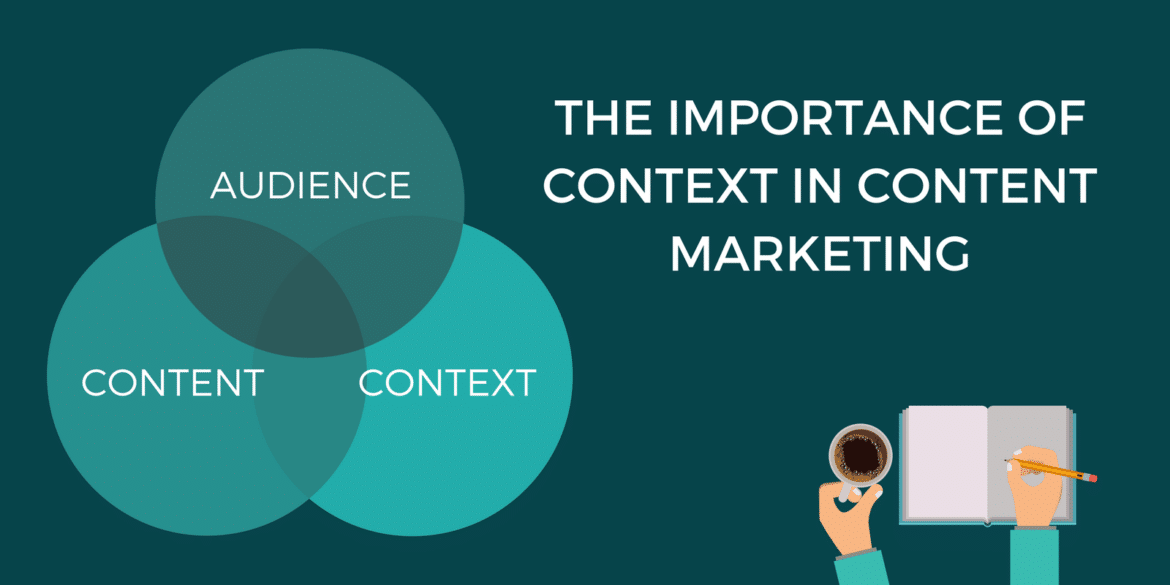I have a great recipe for you. It’s low-carb, delicious, and… hey, there’s this great book right here. I read it in a few hours, do you want to know what the title is? Oh! My! Gosh! Look at all these cute kittens and puppies. Aren’t they just the best? Oh, and by the way, if you’ll just click on this link, you can solve all of your productivity problems in fifteen minutes. P.S. That team stinks. You should really like my team.
If you’re feeling lost, don’t worry. That’s the point. In the digital age, we have so much information coming at us all of the time.
Just think about how quickly one can get a little bit dizzy and overwhelmed when signing into Twitter. There are memes, links for how to increase your business success, and lots of random bits of randomness. In this sort of environment, marketing comes down to context just as much as it does to content.

There Is A Time And A Place For Everything
I’m sure that by now you’ve had an experience where you’ve been on a message board or in a Facebook or LinkedIn group where something is thrown in out of left field.
While this is a more obvious case of the context not fitting the content being shared, there are more subtle cases of this that can lead you and your brand to not get the attention you’re looking for.
For instance, how many times on Twitter have you shared some random bit of randomness on your business page, even though it would generally not be interesting to your audience? I think many of us are guilty of this, particularly when we’re trying to hop into a trending topic. There’s a problem, though.
For every bit of noncontextual content we share on blogs and social media sites, we lose a tiny bit of our audience who think, “What’s this?”
It should go without saying that on company brand sites political and religious memes are a no-no – unless you’re running a campaign or a church. Before you post something that’s off topic, ask yourself, “Is this the time and place for this?”
What Value Are You Adding To The Conversation?
Gone are the days where you can simply regurgitate what’s already been said. (Actually, those days never existed, but I can’t tell you how many times I’ll scan an article offering the latest advice on niche topics and feel like I’ve already read that article – 234,327 times, to be exact – just with different words.)
When you’re creating content, yes, it’s important to have great content. We know that. Give your audience value. Do that. But also, you need to show how your take on the topic you’re tackling is different from anyone else’s take.
To be sure you’re adding something to the conversation – read, read a lot in the topics you write about. Bookmark benchmark articles you’ve read. Then, when writing, give your writing context by doing what scholars do – by citing the articles you’ve read and being clear about what you’re adding and why.
If you’re sharing an article, even on Twitter where brevity counts, a quick bit about why you’re sharing that particular article will garner more of a response than simply sharing random articles from around the Internet. “@EdenWaldon’s discussion of why blog post captions help people find websites made me rethink our company’s use of images on yourlink.com.”

Connecting The Dots With Your Stories
“Storytelling” is a great buzzword right now with content marketers. While good storytelling is important, it’s also important to root your stories in a context. Rather than simply writing about a customer success story, root that success story in the product you sell.
Know why you’re telling the story. What does it illustrate about your products or services? What will the reader think when he or she is finished?
In addition to ensuring that your content ties in with your products or services, it’s also important to be sure that you connect the dots with your stories. Rather than just focusing on content that covers a particular campaign, focus on creating content that meshes with what you already have.
By linking to other posts that you already have available, you can create a cohesive whole where your content fits together and no one piece stands out as being completely different. Besides, it’s good to be able to send readers to what you’ve already written.
Remember: Context Is What Gives Your Work Meaning
When I was randomly rattling off items that you might find in your social media feed at the start of this article, it wasn’t really clear what I was doing with that. Once I introduced that I would be talking about putting content in context, it made a lot more sense.
Thus, putting my seemingly random list of items into the reason why I was sharing such a list gave that list meaning to you as the reader.
If you throw content at your audience – be it through your company blog, your social media sites, or videos on YouTube – without first grounding that content in a context, the meaning of it all will be lost. In the digital world, 17-20 seconds is all you have before a potential customer or client is on to the next thing.

Know Your Audience – And Speak To Them
The best way to ensure that your content has context is to know your audience.
Create a “buyer persona” – a brief biography of your ideal content consumer. Who is this person? What does this person already know? What pop culture icons and brands does this person respond to? What will make your content meaningful to him or her? What will keep that person on your page, cause the person to return to you, and inspire the person to convert from reader to customer?
By understanding the answers to these questions, you can craft the kinds of content that will be able to locate what you’re talking about into a wider context.
If you’re creating sprockets, you need to know that Cogswell Cogs are your competitor’s product, and why someone might choose them over Spacely Sprockets. Your goal is to give your reader the context as to why someone ought to buy your sprockets over their cogs – even if they are exactly the same thing save for the name.
The only way you can do this successfully is to give a context for the sprockets through understanding your potential customer.
The Problem Of Floating Content
Taken without any context, content can take on different meanings. Be sure that you’re speaking the language you want your audience to act on. Take the time to ground your content with the right message and deliver that content at the right moment.
Listen to your audience. What questions do they have? What problems do they have? Use your content to answer their questions and show how you can solve their problems. Do so in a way that makes you relevant. Don’t throw out a bunch of random, seemingly unrelated, bits of content at your audience. Instead, take the time to make sure that what you’re saying and sharing has a clear meaning for those consuming it.
Ronda Bowen is VP of Editorial Services at Creative Mindscape. She also provides editorial consulting services to a variety of businesses and individuals, runs a handful of blogs (including WiningWife®), and serves as Fundraising Director for JB Dondolo, Inc. In her downtime, she’s a distance runner, a foodie, a wine and coffee aficionado, seamstress and crafter, and board game enthusiast. Learn more about Ronda’s various projects on her website.




